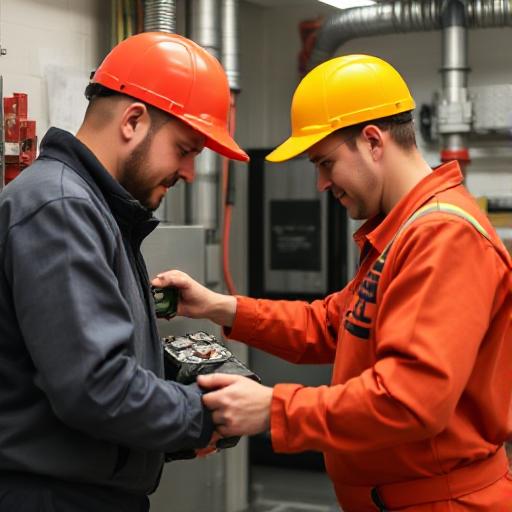Techniques for Engaging and Retaining HVAC Apprentices in 2025
The HVAC industry is facing a critical challenge: a growing shortage of skilled technicians. With projections suggesting a gap of 225,000 by 2030, engaging and retaining HVAC apprentices has never been more crucial. In this post, we’ll explore effective strategies to ensure your apprenticeship program not only attracts top talent but keeps them motivated and invested in their career paths.
Understanding the Importance of HVAC Apprenticeship Programs
Apprenticeship programs are the backbone of the HVAC industry’s workforce development. Typically lasting 3 to 4 years, these programs offer a blend of classroom instruction and hands-on training, essential for building the technical competency needed in this field. But what makes them truly effective?
Key Elements of Successful Apprenticeship Programs
- Comprehensive training that combines theory with practical experience.
- Clear career advancement pathways to motivate apprentices.
- Access to modern tools and technology, such as smart thermostats, to enhance learning.
Engagement and Retention Strategies for HVAC Apprentices
Retaining skilled apprentices requires a strategic approach. Here are some techniques that have proven to be effective:
- Flexible Scheduling: Accommodating work-life balance can significantly enhance job satisfaction.
- Career Path Strategies: Offering clear advancement opportunities and industry-recognized certifications like NATE or RETA can boost motivation.
- Modern Tools and Technology: Providing apprentices with exposure to cutting-edge tools like the Ruud Econet 800 Series Smart Thermostat can increase engagement and technical competence.
Creating a Supportive Work Environment
A supportive work environment is key to retaining apprentices. This includes offering mentorship opportunities, recognizing achievements, and investing in ongoing training and development. Federal investments in workforce development, totaling $244 million, highlight the importance of expanding apprenticeship programs to close skill gaps.
Employee Recognition and Support
- Recognize achievements to boost morale and professional pride.
- Provide mentorship to guide apprentices through their career paths.
- Invest in continuous education and upskilling to keep skills sharp.
Conclusion
With a strategic focus on engagement and retention, your HVAC apprenticeship program can thrive even amidst industry challenges. By offering flexible roles, modern tools, and clear career paths, you can ensure your apprentices remain motivated and committed. Invest in your apprentices today, and you’ll secure a skilled workforce for tomorrow.
Ready to enhance your HVAC apprenticeship program? Start implementing these strategies today to attract and retain the best talent in the industry.
FAQ: Engaging and Retaining HVAC Apprentices
What are the most effective HVAC apprentice retention strategies?
Flexible scheduling, clear career advancement opportunities, and ongoing training are key strategies for retaining HVAC apprentices.
How can I engage HVAC apprentices more effectively?
Incorporate modern tools and technologies in training, offer mentorship, and recognize achievements to keep apprentices engaged.
Why is ongoing training important for HVAC apprentices?
Ongoing training helps apprentices stay updated with the latest industry trends and technologies, boosting their competence and motivation.
What role do certifications play in HVAC apprenticeship programs?
Certifications like NATE or RETA formalize advancement and enhance professional pride, contributing to apprentice retention.
How does federal investment impact HVAC apprenticeship programs?
Federal investment supports the expansion of apprenticeship programs, helping close skill gaps and prepare a skilled workforce for the future.


